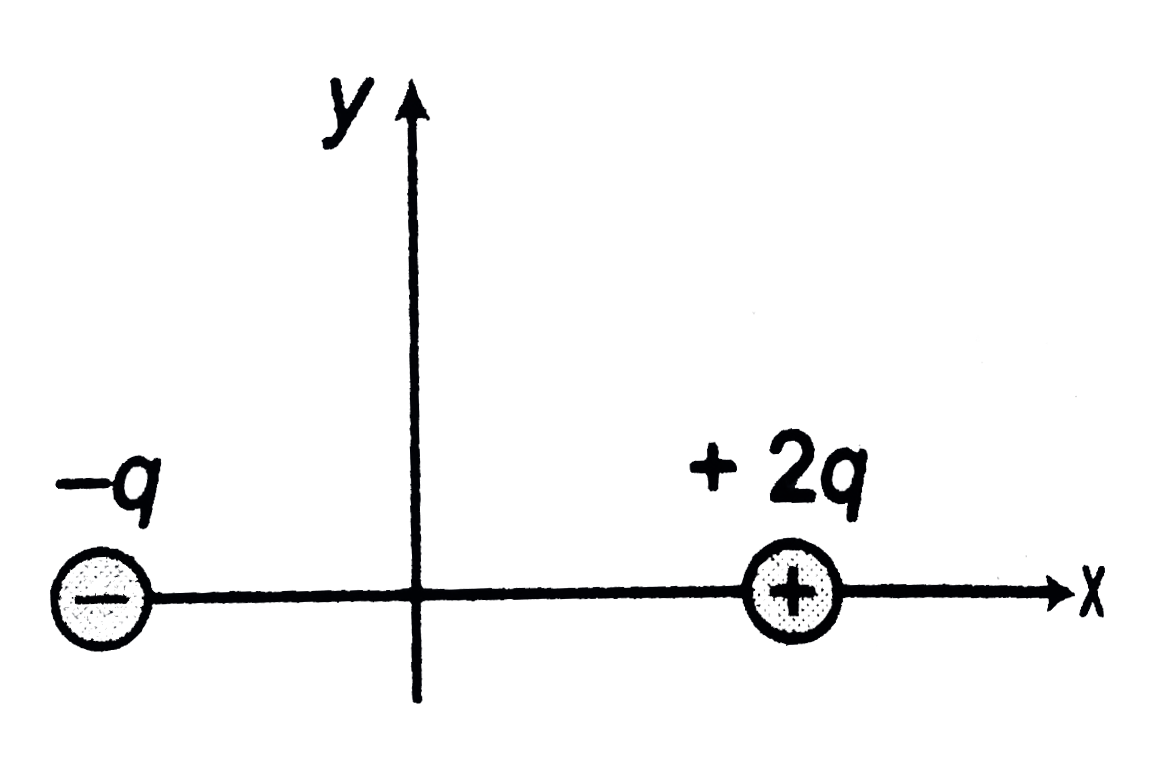If an isollated infinite sheet contains charge Q1 on its one surface and charge Q2 on its other surface, then prove that electric field intensity at a point in front of sheet will be Q2Aε0, where Q=Q1+Q2
Electric field at point P :
→E=→EQ1+→EQ2=Q12Aε0ˆn+Q22Aε0ˆn=Q1+Q22Aε0ˆn=Q2Aε0ˆn
[This shows that the resultant field due to a sheet depends only on the total charge of the sheet and not on the distribution of charge on individual surfaces].

Topper's Solved these Questions
- ELECTROSTATICSBOOK - RESONANCECHAPTER - ELECTROSTATICSEXERCISE - Problems
22 Videos
- ELECTROSTATICSBOOK - RESONANCECHAPTER - ELECTROSTATICSEXERCISE - Exercise-1 Section (A)
9 Videos
- ELECTROMAGNETIC INDUCTIONBOOK - RESONANCECHAPTER - ELECTROMAGNETIC INDUCTIONEXERCISE - A.l.P
19 Videos
- EXPERIMENTAL PHYSICSBOOK - RESONANCECHAPTER - EXPERIMENTAL PHYSICSEXERCISE - PART -II
10 Videos
Similar Questions
If an isolated infinite plate contains a charge Q1 on one of its surfaces and a charge Q2 on its other surface, then prove that electric field intensity at a point in front of the plate will be Q/2Aε0, where Q=Q1+Q2
View SolutionCharge 2Q and −Q are placed as shown in figure. The point at which electric field intensity is zero will be somewhere

View Solution
Knowledge Check
If q is the charge per unit area on the surface of a conductor, then the electric field intensity at a point on the surface is
A(qε0) normal to surfaceB(q2ε0) normal to surfaceC(qε0) tangential to surfaceD(q2ε0) tangential to surfaceCharges +2Q and −Q are placed as shown in figure. The point at which electric field intensity is zero will be
 ASomewhere between −Q and +20BSomewhere on the left of −QCSomewhere on the right of +2QDSomewhere on the right bisector of line Joining−Q and +2Q
ASomewhere between −Q and +20BSomewhere on the left of −QCSomewhere on the right of +2QDSomewhere on the right bisector of line Joining−Q and +2QCharge 2qand−q are placed at (a,0)and(−a,0) as shown in the figure. The coordinates of the point at which electric field intensity is zero will be (x,0) where
 A−a<x<aBx<−aCx>−aD0<x<a
A−a<x<aBx<−aCx>−aD0<x<a
A point charge +Q is placed in the vicinity of a conducting surface. Draw the electric field lines between the surface and the charge.
View SolutionA point charges + Q is placed in the vicinity of a conducting surface Draw. The electric field lines between the surface and the charges.
View SolutionA charge Q is enclosed by a Gaussian surface. If surface area is doubled and charge Q is tripled then the outward electric flux will
View SolutionA point charge q produces an electric field of magnitude 2.0NC−1 at a point distant 50 cm from it. From the value of q.
View SolutionThe point charges Q and −2Q are placed at some distance apart. If the electirc field at the location of Q is E, the electric field at the location of −2Q will be
View Solution
